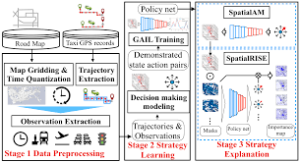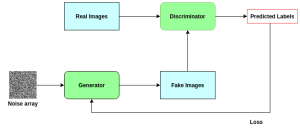Introduction
Lately, AI has experienced substantial growth in acquiring knowledge from demonstrations. From different strategies, The emergence of GAIL in AI brings forth a promising technique that could fundamentally change the landscape. Exploring extensively the universe of GAIL, scrutinizing its strengths, weaknesses, and practical utilization.
Understanding Human Decision-Making Strategies
Prior to exploring GAIL, understanding the significance of acquiring human decision-making strategies is essential. Decision-making for humans frequently involves the development of distinct guidelines and patterns, and mimicking these behaviors is essential for AI to interact seamlessly with the real world. Whether it’s a robot predicting human behaviors or a driverless vehicle moving efficiently in busy streets. Learning through imitation unlocks fresh opportunities in the realm of AI implementations.
GAIL Introduction
In the realm of Inversive Reinforcement Learning (IRL), GAIL stands out, uses the underlying principles of Generative Adversarial Networks (GANs). In essence, GAIL is a model-free approach to imitation learning showcasing extraordinary achievement in mimicking complex human behaviors. Particularly in expansive, multidimensional settings. GAIL’s architecture and its learning process from expert trajectories are thoroughly explained in this section.

A Potent Fusion of IRL and GANs
Grasping the potential of GAIL necessitates comprehending the synergy between Inverse Reinforcement Learning (IRL) and GANs. By employing both a generator and a discriminator network, Generators trained using GAIL can effectively imitate expert behaviors by leveraging the discriminator as their reward mechanism. GAIL benefits from this distinctive blend to acquire knowledge from a restricted number of skilled displays and successfully extrapolate those skills to novel contexts.
Pros and Cons associated with Generative Adversarial Imitation Learning
While Learning sequential decision-making policies with GAIL holds great potential, it is not without its limitations. This section explores the advantages of GAIL, including its capability to tackle intricate issues and generalize well. Considering the opposite perspective, we look into its shortcomings, like the difficulties in acquiring knowledge from multi-modal demonstrations and potential instability in adversarial methods.

Real-World Applications of GAIL
There are numerous practical applications for GAIL. From robotic manipulations to video games, Different sectors have found success by applying GAIL to learn near-optimal behaviors to learn near-optimal behaviors from expert demonstrations. The following examples exemplify how GAIL is transforming various AI-driven applications and their practical implementations.
Investigating the Obstacles and Concerns Associated with GAIL
As with any cutting-edge technology, GAIL faces its share of challenges. Let’s dig deeper into the difficulties experienced during GAIL projects. Starting from the insufficient theoretical comprehension up to the probable convergence challenges, we examine the hurdles that researchers and developers are currently tackling.
Conclusion
Offering a potent method for learning from demonstrations is GAIL, an innovation that spearheads AI research. GAIL, with its capability to mimic human behaviors, has unveiled thrilling prospects for AI applications. In spite of that, scholars should maintain their vigilance in addressing the constraints and hurdles for unleashing the maximum potential of GAIL and propelling AI towards novel horizons. As the limits of AI are pushed further, For the AI community, GAIL remains an intriguing field to explore.




